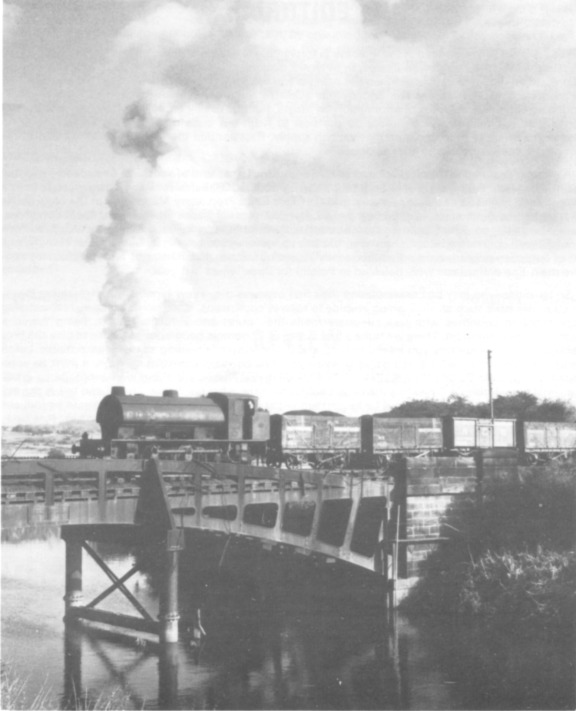
| THE INDUSTRIAL RAILWAY RECORD |
© APRIL 1971 |
EDITORIAL
We are pleased yet alarmed at the increase in foreign travel enquiries that come onto our desks. Pleased because we have advocated an interest in overseas matters, and because we hope to hear of many lines at present unknown to us; but alarmed because we fear we are unable to cope with the increasing number of calls for help and advice. The Society has available quite comprehensive records on a number of countries and many snippets of information on others, but has to rely on its members and associates for up-to-date information. We therefore do our best to help, but quite obviously the limitations of time restrict the quantity of information that we can supply. Rest assured that we will do all we can to help, but please keep enquiries as brief as possible.
A popular destination this year appears to be South Africa, that land of sunshine, fine scenery and much main-line steam. Perhaps it would assist if we say right now that the narrow gauge sugar estate lines are almost entirely closed or diesel operated, and that East Rand Proprietary Mines, one of the biggest users of steam at the gold mines, is obtaining diesels. Happily, most collieries retain steam. Spain continues to be well visited – no doubt more so than South Africa – and at least half the steam recorded in Pocket Book SP still operates. Portugal, however, has lost its narrow gauge steam industrials. Surprisingly, many other European countries are only infrequently visited by industrial enthusiasts; although, as we know, two main-line enthusiasts were detained in Poland for three weeks last year.
So for those who may be contemplating their first overseas trip, a few broad hints. Remember that not all countries have such an easy-going attitude to railway enthusiasts, since railways have greater strategic importance in countries with less adequate roads than ours; and industrial plants, being fewer, are relatively more important. There are quite a few books on economic geography available to give the broad background to the country you intend to visit, and it is worthwhile reading as much as possible before-hand. Although you read in these pages of some very fine overseas industrial railways, it must be appreciated that outside Europe they are few in number. Not many years ago there were more above-ground industrial locomotives in Yorkshire than you could find in the whole of South Africa; and this is the most industrialised country in Africa, and far larger than Great Britain. If you wish to concentrate on industrial locomotives it is therefore best to explore Europe first (and much is still unknown to us). Not only is there more scope, but travel is easier, and large-scale maps are more readily available. Take plenty of film, and remember to let our Overseas Records Officer have details of your observations. Perhaps you will write something for us when (and if. . .) you return!
"The Elswick Works of Messrs Sir W. G. Armstrong, Whitworth & Co Ltd, are to build locomotives and rolling stock in the near future." ("The Locomotive Magazine", 14th December 1918. – KPP)
"CHINESE METALLURGICAL UNDERTAKINGS. .... The industrial undertakings of His Excellency the Viceroy of the Liang-Hu provinces comprise [the] Iron and Steel Works [which are] located to the north of the Kusishan (hill), Hanyang, at the meeting of the Hang and Yangtze, in a most convenient place to receive by water-way the supplies of raw materials for the works. Two temporary wharves .. are connected by a normal-gauge railway-track running alongside the different departments of the works. ... The Mines [at] Tieh Shan p’u being 17 miles distant from [the] Yangtze, a railway of standard gauge has been built from the [iron-ore] mine to Shih-hui-yao, a place on the right bank of the Yangtze, about 70 miles below Hankow. The first sod was turned in July 1891, and the first through train run in September 1892. The line is, so far, not intended for passenger traffic. ... Besides the two termini there is only one other [crossing] station, Hsai-lu, in the middle of the line. The speed on the line will not exceed 20 miles an hour; the rails weigh 52lb per yard, and rest on mild-steel sleepers of 100lb each. The sharpest curve is of 500 feet radius and the steepest gradient 1 in 70. ... Manganese-ore has been found not far from Fu Ch’ih K’ou, on the right bank of the Yangtze, about 105 miles below Hankow. The ore will be carried from the mine to the water by a narrow-gauge railway some two miles in length
("Iron", 24th February 1893, quoting from a report to the Foreign Office by Mr C. T. Gardner, Her Majesty’s Consul at Hankow. – KPP)

S116 SYLVIA (Hunslet 3836 of 1955) shunts loaded coal wagons to the Primrose Hill Colliery wharf on the Aire & Calder Canal. The bridge depicted is an iron structure over the river Aire built in 1831 at the Milton Ironworks near Barnsley. Photographed on 29th October 1969 by A. G. W. Jones.